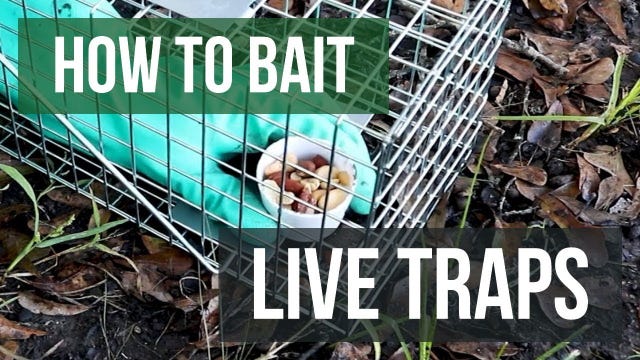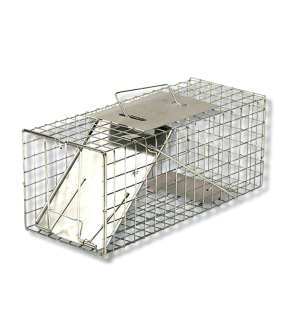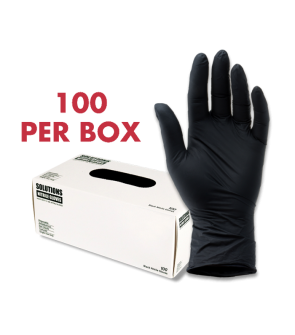Gain access to personalized product screening, the best pricing, rewards, and more!
Most Effective Products
Animals Stealing Bait But Not Getting Trapped: What's Going Wrong?
This page is a general DIY guide that will explain why you are finding your bait gone in your humane live animal trap. By following along with the tips and information on this page you can ensure better humane capture rates of live animals in your property.
If you're dealing with a live trap that keeps getting tripped, with the bait missing and no animal inside, you're not alone it's a common frustration for property owners, pest control pros, and trappers alike. Animals are often smarter and more cautious than we expect, able to snatch bait without fully entering the trap or triggering the mechanism.
In this article, we’ll explore the most common reasons why animals steal bait but avoid getting trapped, and provide practical tips to help you improve your trapping success. Whether you’re dealing with raccoons, squirrels, or other wildlife, understanding these challenges can make all the difference.
Why Animals Avoid Live Humane Traps?
1. Animals Are Too Small or Too Quick
Small animals like chipmunks, or young squirrels can enter the trap, grab the bait, and leave without applying enough pressure to fully trigger the trap.
Alternatively, they trip the trap but escape before the door shuts all the way due to their speed or size.
Some animals can squeeze out through the gaps or weak points in traps that aren’t designed for them.
2. Animals Are Trap-Smart and Experienced
If an animal has been trapped before, it might approach more cautiously, grabbing bait with minimal movement.
Some animals learn to reach in through the side or back if bait placement allows it, avoiding full entry.
Repeated failed trap attempts can create trap-shy behavior where animals associate the trap with a threat.
3. Trap Malfunction or Damaged
Worn or rusted springs, sticky hinges, or damaged doors may delay trap closure, giving animals time to escape.
In some cases, the trigger plate may misfire due to dirt or a misalignment, tripping without full closure. Too-sensitive triggers may cause false tripping due to wind, rain, or nearby movement, while too-stiff triggers won’t activate unless a large animal steps hard.
4. Incorrect Baiting Technique
Bait placed too close to the front of the trap may let animals grab it without stepping far enough in to trigger the plate.
Loose bait (like peanut butter on paper or plates) may be licked off without setting off the trap at all. Animals might also drag the bait out using their paws or snouts if it isn’t secured properly.
5. External Interference with Trap
Raccoons, opossums, other wildlife, or even pets might shake or partially open the trap to get bait without entering.
Human scent or frequent visits can cause some animals to avoid the area entirely.
Live Animal Trapping Tips
Choose The Right Bait For Your Target Animal

Selecting the correct bait is just as critical as trap placement or setup. Different animals are drawn to specific scents and food types, so using the right bait increases your chances of a successful catch.
For raccoons, sweet and smelly foods like marshmallows, watermelons, strawberries, apples, fish, canned tuna, wet cat food, or cooked meat like hotdogs are highly effective.
Squirrels and chipmunks respond well to peanut butter, corn, cereal grains, popcorn, nuts, or sunflower seeds.
If you're targeting opossums or skunks, try strong-smelling foods like fish, meat, wet cat food, or sardines.
For feral cats, fish-based wet food or leftover meat scraps often work best.
Some of the most effective options for feral or stray dogs include canned dog food, rotisserie chicken, bacon, hot dogs, or greasy cooked meat scraps.
Rabbits will need fruit and vegetables, especially crunchy foods like brussel sprouts, lettuce, or carrots.
For groundhogs, you can use corn, lettuce, peas, strawberries, cantaloupe, kale, or collard greens.
You place these baits in a bowl or a styrofoam cup.
Secure The Bait Properly

One of the most common reasons bait disappears while the trap is tripped and empty is improper bait placement.
If the bait is too close to the entrance or loosely set on the trigger plate, animals can reach in, grab it, and leave without ever stepping inside.
To fix this, secure the bait at the very back of the trap behind the trigger plate using wire, a bait cup, or a bait cage.
This forces the animal to fully enter the trap and step on the trigger mechanism to access the food. Using a small bait trail leading into the trap can also guide animals in more confidently.
If you find it hard to access the back of your trap, you can tie the door lock to the roof of the trap.
For larger traps, you may need to use a stick to push the bait behind the trigger plate.
When your bait is steady and behind the trigger plate you are ready to set your humane trap.
Another way to set bait in a live trap is to dig a small hole. Dig a small hole where the rear of the trap would be. Fill the hole with your bait, and set the trap. Make sure your bait is positioned in the rear, so that animals must move over the trigger plate to get to it.
Inspect And Maintain The Trap
 Traps that are a few seasons old or left outdoors may develop rust, debris buildup, or weakened springs. These issues can delay the trap door's closure or prevent it from sealing entirely, allowing animals to escape after triggering the trap.
Traps that are a few seasons old or left outdoors may develop rust, debris buildup, or weakened springs. These issues can delay the trap door's closure or prevent it from sealing entirely, allowing animals to escape after triggering the trap.
Inspect the trap’s moving parts regularly. Clean the trigger plate and hinges, and apply a light, non-toxic lubricant to keep everything moving freely.
A trap that’s clean and well-maintained resets reliably and closes quickly, improving your capture rate
Choose The Right Size Trap For the Animal
Using a trap that’s too large or too small for your target species can lead to consistent failures. Smaller animals may not weigh enough to trigger larger traps, while larger animals may avoid entering small traps altogether or force their way out.
Always use a properly sized trap designed for the specific animal you’re targeting.
For example, a raccoon trap is too heavy for squirrels, while a chipmunk could escape through the bars of a larger trap.
Place The Trap in the Right Location

Avoid setting the trap in open areas where animals feel exposed.
Camouflage the trap using natural materials like leaves, straw, or dirt to reduce suspicion, especially if the target animal has seen or interacted with the trap before. Also, keep the trap stable and level on the ground so it doesn’t rock or make noise when stepped on.
If your trap is in direct sun, especially in warmer months, any captured animal could quickly overheat and die before you return.
Always set live traps in shaded areas, under trees, decks, or awnings to protect captured animals from direct sunlight and heat. You can also place a towel or cardboard over part of the trap for additional shade, but ensure airflow remains unobstructed.
The more natural the setup feels, the more likely the animal will enter without hesitation.
Minimize Human Scent

Discourage Escape Attempts and Movements

A properly placed weight helps keep the trap stable, reducing the chance that a captured animal can flip it over or push their way out. It also helps anchor lightweight traps during windy conditions or on uneven terrain.
However, it’s important to place the rock carefully. Never set it near the trap's door mechanism or trigger system, as it could interfere with proper closure or prevent the door from snapping shut.
The rock should sit evenly on the top, centered to distribute weight without warping the frame. For extra security, especially with determined animals, you can also use stakes, bungee cords, or zip ties to fasten the trap to the ground.
Done correctly, adding a weight can improve trap reliability and animal safety without compromising function.
Install A Trail Camera To Monitor Trap Activity
If you're repeatedly finding bait gone and traps tripped with no catch, a motion-activated trail camera can reveal exactly what’s happening.
It can show you whether a specific animal is triggering the trap and escaping, or if something else like a bird, wind, or even if another animal is interfering with the setup. This visual feedback can help you refine bait placement, trap sensitivity, or identify the actual species you're dealing with.
Key Takeaways
Could other wildlife be interfering with my trap?
- Yes, critters like raccoons, foxes, or even curious birds have been known to dig up or dismantle traps without triggering them.
What's the Best Bait For A Humane Live Animal Trap
- The best bait for a humane live animal trap depends on the species you’re targeting, but in general, it should be fresh, fragrant, and hard to steal without fully entering the trap.
What Time of Day Is Best For Setting Live Humane Animal Traps?
- The best time of day to set live traps depends on the target animal’s activity patterns. For nocturnal animals like raccoons, opossums, or skunks, it’s ideal to set traps late afternoon or early evening so they’re active during the night when the traps are ready. For diurnal animals such as squirrels, groundhogs, or rabbits, setting traps in the early morning before they start feeding increases your chances. Additionally, avoid setting traps during extreme heat or midday sun to prevent stressing trapped animals. Instead, place your humane live animal traps in shaded, cool areas to ensure safety and success.










